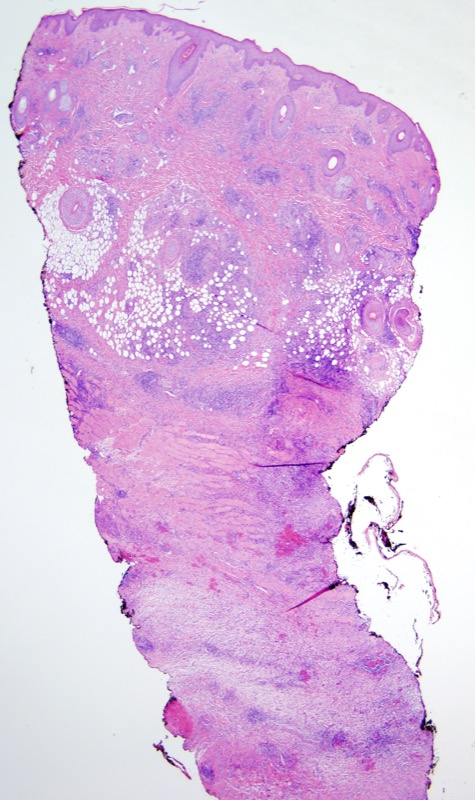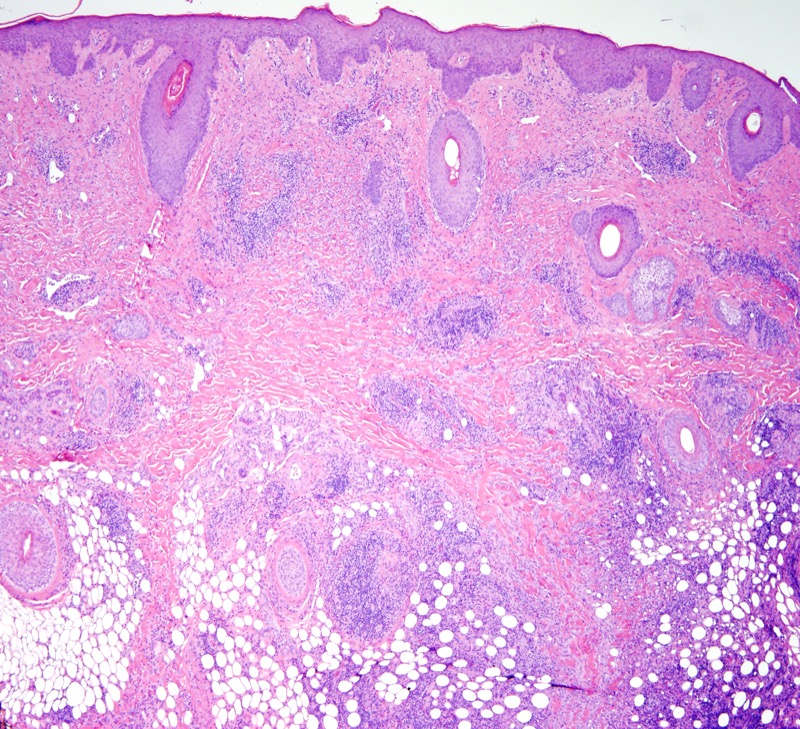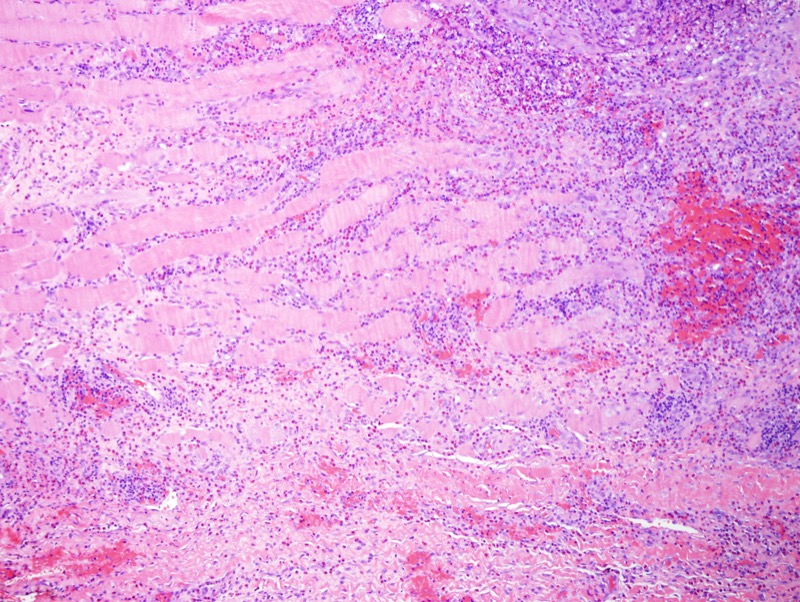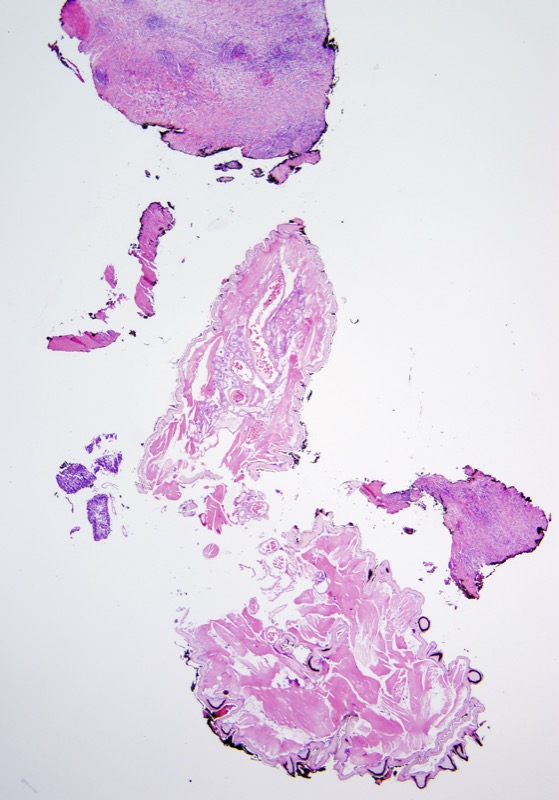The findings are diagnostic of myiasis reflective of a fly larva parasitizing the skin. There is an exuberant lymphohistiocytic and eosinophilic immunogenic host response to the larva. The larva in this case has penetrated the skin whereby the cross section of the parasite shows the very classic findings that one sees in myiasis caused by a tropical fly larva albeit one cannot ascertain any more specific entomological aspects of the fly maggot.
In mammals the larvae can feed on living or dead tissue. The disease has a worldwide distribution but is more common in poor socioeconomic regions of tropical countries. Patients recall an insect bite that continues to enlarges reaching up to 3 cm in diameter. Removal of the intact larva is curative.







